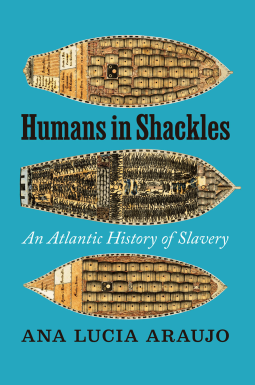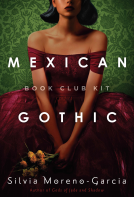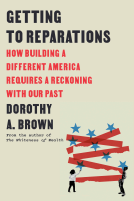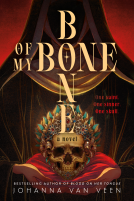
Humans in Shackles
An Atlantic History of Slavery
by Ana Lucia Araujo
This title was previously available on NetGalley and is now archived.
Send NetGalley books directly to your Kindle or Kindle app
1
To read on a Kindle or Kindle app, please add kindle@netgalley.com as an approved email address to receive files in your Amazon account. Click here for step-by-step instructions.
2
Also find your Kindle email address within your Amazon account, and enter it here.
Pub Date Oct 15 2024 | Archive Date Oct 01 2024
Talking about this book? Use #HumansinShackles #NetGalley. More hashtag tips!
Description
During the era of the Atlantic slave trade, more than twelve million enslaved Africans were forcibly transported to the Americas in cramped, inhumane conditions. Many of them died on the way, and those who survived had to endure further suffering in the violent conditions that met them onshore. Covering more than three hundred years, Humans in Shackles grapples with this history by foregrounding the lived experience of enslaved people in tracing the long, complex history of slavery in the Americas.
Based on twenty years of research, this book not only serves as a comprehensive history; it also expands that history by providing a truly transnational account that emphasizes the central role of Brazil in the Atlantic slave trade. Additionally, it is deeply informed by African history and shows how African practices and traditions survived and persisted in the Americas among communities of enslaved people. Drawing on primary sources including travel accounts, pamphlets, newspaper articles, slave narratives, and visual sources such as artworks and artifacts, Araujo illuminates the social, cultural, and religious lives of enslaved people working in plantations and urban areas, building families and cultivating affective ties, congregating and re-creating their cultures, and organizing rebellions.
Humans in Shackles puts the lived experiences of enslaved peoples at the center of the story and investigates the heavy impact these atrocities have had on the current wealth disparity of the Americas and rampant anti-Black racism.
Available Editions
| EDITION | Other Format |
| ISBN | 9780226771588 |
| PRICE | $39.95 (USD) |
| PAGES | 640 |
Available on NetGalley
Average rating from 16 members
Featured Reviews
This book is an unwavering look into the slave trade and slavery specifically in America. It breaks down what happened, who profited, why it lasted so long, and the lasting impacts of slavery to this day. It's told through a combination of stories told by those that were survivors and family members, and historical records. This book should be required reading in every school so children can learnt truth of slavery and how it affected the country for generations.
 Educator 809926
Educator 809926
A well researched and in depth look into the Atlantic slave trade and what happened to the men women and children that were taken across the seas.
Mainly looking into the trade in America but with mention of the western counties too.
Very detailed and interesting.
 Cherise M, Librarian
Cherise M, Librarian
I knew there was a lot I didn’t know much about when it came to transatlantic slavery outside of the United States, but I could never have guessed just how much. I found this to be incredibly eye opening and well researched, and appreciated the author’s commitment to exploring the multidimensional lives led by the people who were captured and enslaved.
 Nikhil S, Reviewer
Nikhil S, Reviewer
Review: Humans in Shackles by Ana Lucia Araujo
In "Humans in Shackles," Ana Lucia Araujo confronts us with the grim reality of slavery's enduring legacy, a topic as uncomfortable as it is necessary. Araujo, a professor of history at Howard University, brings her considerable expertise to bear on this sweeping examination of human bondage across time and continents.
The book opens with a jarring image: a pair of rusted shackles unearthed from a colonial-era plantation. It's a haunting reminder that the artifacts of enslavement are not confined to museums but continue to surface in our world, much like the persistent effects of this institution on modern societies.
Araujo's narrative is both expansive and incisive. She deftly navigates from the ancient world to the present day, revealing how slavery has shape-shifted through the ages while maintaining its core of exploitation and dehumanization. "The tools of oppression may change," she writes, "but the fundamental denial of human dignity remains constant."
Particularly compelling is her analysis of how slavery has been remembered - or forgotten - in different cultures. The author doesn't shy away from challenging popular narratives, including the often sanitized portrayal of abolition in Western countries. "Emancipation," Araujo argues, "was less a gift bestowed by benevolent leaders than a hard-won right, often paid for in blood."
While the book's scope is ambitious, occasionally the wealth of information threatens to overwhelm. Some readers might find themselves yearning for more in-depth exploration of specific cases. However, this breadth allows Araujo to draw fascinating parallels between disparate slave systems, from Roman latifundia to Caribbean sugar plantations.
"Humans in Shackles" is not an easy read, nor should it be. It's a necessary reckoning with a history that has shaped our world in profound and often unacknowledged ways. Araujo's work reminds us that the echoes of slavery resound not just in history books, but in the persistent inequalities and prejudices of our time.
As we grapple with ongoing issues of racial justice and human rights, Araujo's book serves as both a warning and a call to action. It challenges us to recognize the chains of the past that still bind us and to work towards a future truly free from human bondage.
Ana Lucia Araujo's book offers a riveting analysis and treasure trove of knowledge regarding the Atlantic Slave Trade and the origins of slavery in the Americas. It addresses questions one might never have dared to ask but finds themselves eager to explore once the history is shared. Araujo masterfully compares and contrasts the institution of slavery across several countries, a challenging task she handles exceptionally well. Though the book is lengthy, the well-organized chapter headers make it easy to navigate for those interested in specific topics. This is a must-read for everyone, as it opens the door to a deeper understanding of slavery and its enduring impact. There is still so much to learn, and this book is a significant step towards gaining that knowledge.
Humans in Shackles is a linear history of the Atlantic slave trade. It starts with Portuguese raids along the West African coast and the situation of slavery in African nations at the time that became embroiled with European adventurers. It walks through the process of people becoming property: the trade ports on the African coast where enslaved people were collated and traded, the middle passage, and the marketplace (physical and metaphorical) in the Americas where the enslaved were sold.
The book then broadens to discuss the conditions of slavery. Some of these, like the family lives of the enslaved are more conceptual. Others, like the look at the enslaved in urban settings, are more comparative between different material or cultural contexts. Discussing the the fits and starts of the abolition of slavery in the Americas and elsewhere, it concludes on different efforts to deal with formerly enslaved people, usually in the form of their moving, or being moved, back to nations or colonial interests in Africa. Notably, this last bit allows for a much more expansive view on the legacy of the Atlantic system slavery and the many cultural effects that took place outside of the Americas.
A particular highlight of the text is in its focus on Brazil in specific and slavery in South America in general. For many reasons, starting with oceanography and including civil vs. common law, there is much that is noteworthy about how slavery was practiced and ended in Brazil. I was wary about the author including this, in how the introduction suggests that it lacks a lot of the type of first-hand accounts that we have for slavery and the slave trade for for North America and the West Indies. Yet by the end of the book I wanted more. It is difficult to talk about comparable with slavery, a long standing human institution that has had many different variations, but being able to compare the different European implementations within the Americas is fruitful to understanding the nuance of the history in general.
Overall it is an excellent read. My primary complaint is that occasionally would lose the thread. The material was good, and I particularly liked the section on religion, but sometimes the author's desire to be comprehensive overrules the otherwise superior structure of the writing. It may be that it is a better textbook than a book, but give me that problem any day. Other than that, there was a stylistic tic in the way that the author discussed references that persistently distracted me, but minor, and more to do with being a person particularly sensitive to how authors talk about their sources.
Something that I particularly liked is what the book considered impossible to represent. The trend is to allow a greater fluidity in composition of narratives about enslaved people's lives in order to make up for the absence of reliable or comprehensive primary material. I usually defend this practice - I mean, Thucydides, right? - but I feel nervous about it in a Red Team sense of seeing how it could be abused.
This book gets in front of that by asserting the inscrutability of the middle passage in specific and of the Atlantic system of slavery in general. We can make artistic representations, learn all there is to know, and bring full bore all the empathy and imagination that we can muster, but the thing itself remains fundamentally unknowable with meager analogy at best. We advance our knowing best by accepting that. That is a striking claim, and one that makes the book stronger for it.
Overall, a great read, and already something that I think about as what as I would suggest as a general reference to the curious.
My thanks to the author, Ana Lucia Araujo, for writing the book, and to the publisher, University of Chicago Press, for making the ARC available to me.
 Educator 845197
Educator 845197
Thank you to NetGalley and the University of Chicago Press for allowing me to preview a copy of this tome with a digital ARC.
Araujo wrote a comprehensive, well-researched volume on the trans-Atlantic slave trade. We learn all about how to came to be, why it was kept going for so long and the impact left behind. Araujo gives us the nitty gritty of what happened during slavery and how it affected history - including how different societies chose to reframe it in their retelling of it - i.e. the Emancipation Proclamation. The Emancipation Proclamation is often framed as Lincoln's "gift" to enslaved people, but as Araujo tells states, it "was less a gift bestowed by benevolent leaders than a hard-won right, often paid for in blood."
This book is not easy to read - it is long (640 pages) and it is emotionally draining at times to read about the injustices suffered by humans at the hands of other heartless individuals. Even so, these are the texts that MUST be read by EVERYONE so that we do not relive these acts in the future. We must learn from the past in order to not repeat it.
 PETER C, Reviewer
PETER C, Reviewer
Ana Lucia Araujo has written a very detailed book about every aspect of the slave trade, from its early beginning to the mass export of enslaved people to the various colonies. Some of the descriptions of how the slaves were abused are quite harrowing and are powerfully written.
Having lived in Brazil for a number of years, I was very interested to learn about the vast slave trade between Africa and Brazil. The fantastic culture in Brazil is a melting pot of Portuguese, Indigenous tribes, and of course aspects of the traditional African heritage. These diverse elements are incorporated into the native Brazilian Portuguese language, cuisine, music, and religion. Many African words are used daily in Brazil, with very few people recognising their origin.
Sadly the impact of releasing hundreds of thousands of slaves from the plantations and farms, without recourse to any education, guidance, benefits or assistance was not well thought out by the authorities at that time. Brazil is still suffering from the consequences of that act in having a two-tier society, the wealthier white Europeans and the poorer descendants of the black slaves.
To summarise, a well-written, thoughtfully researched book.
 Reviewer 1256435
Reviewer 1256435
A well researched and interesting book about the trans Atlantic slave trade with a special view on Portugal and Brazil. The author is right to think that on a global stage most people think of the US and this means a huge part of the history of slavery isn't investigated fully. The book is seriously researched with about 200 pages of sources and asterisks, and you have faith the whole way through that the author is confident and accurate.
The book doesn’t go into intense details on different aspect but more so offers an overview, a history and includes some personal stories from slaves or freed people and what they did. Some elements were repeated quite a bit without really adding anything new, but beyond that I don't have much in terms of critique.
As an academic text I truly enjoyed this book. This semester I came across a citation of Araujo and once I saw this book I just had to request it. Araujo had great insight and presented a fresh take on the Atlantic Slave Trade. I feel that I know much about the AST but this take was extremely refreshing.
Readers who liked this book also liked:
Silvia Moreno-Garcia
Historical Fiction, Literary Fiction, Sci Fi & Fantasy
Brooke Fast
General Fiction (Adult), Romance, Sci Fi & Fantasy


















